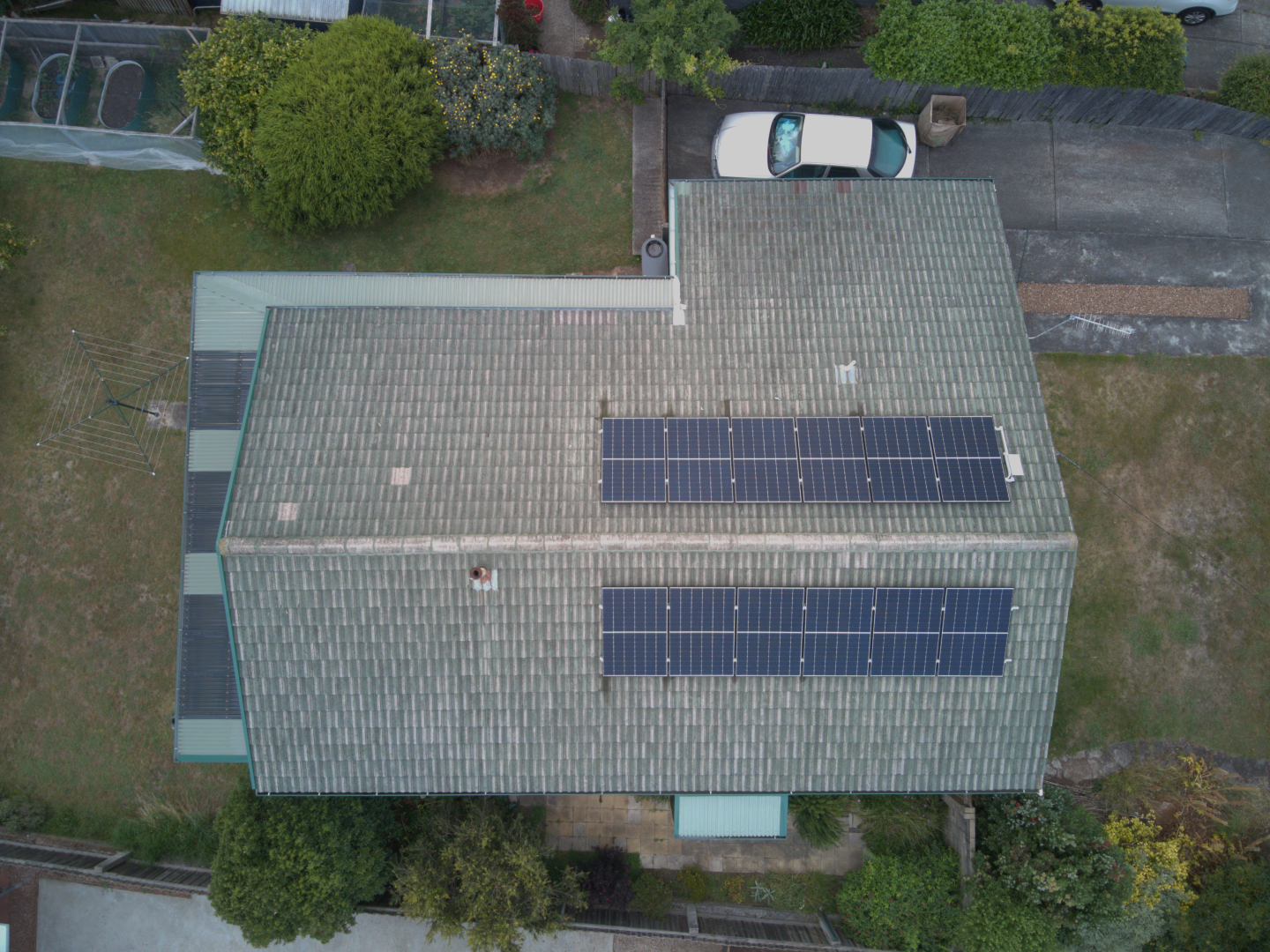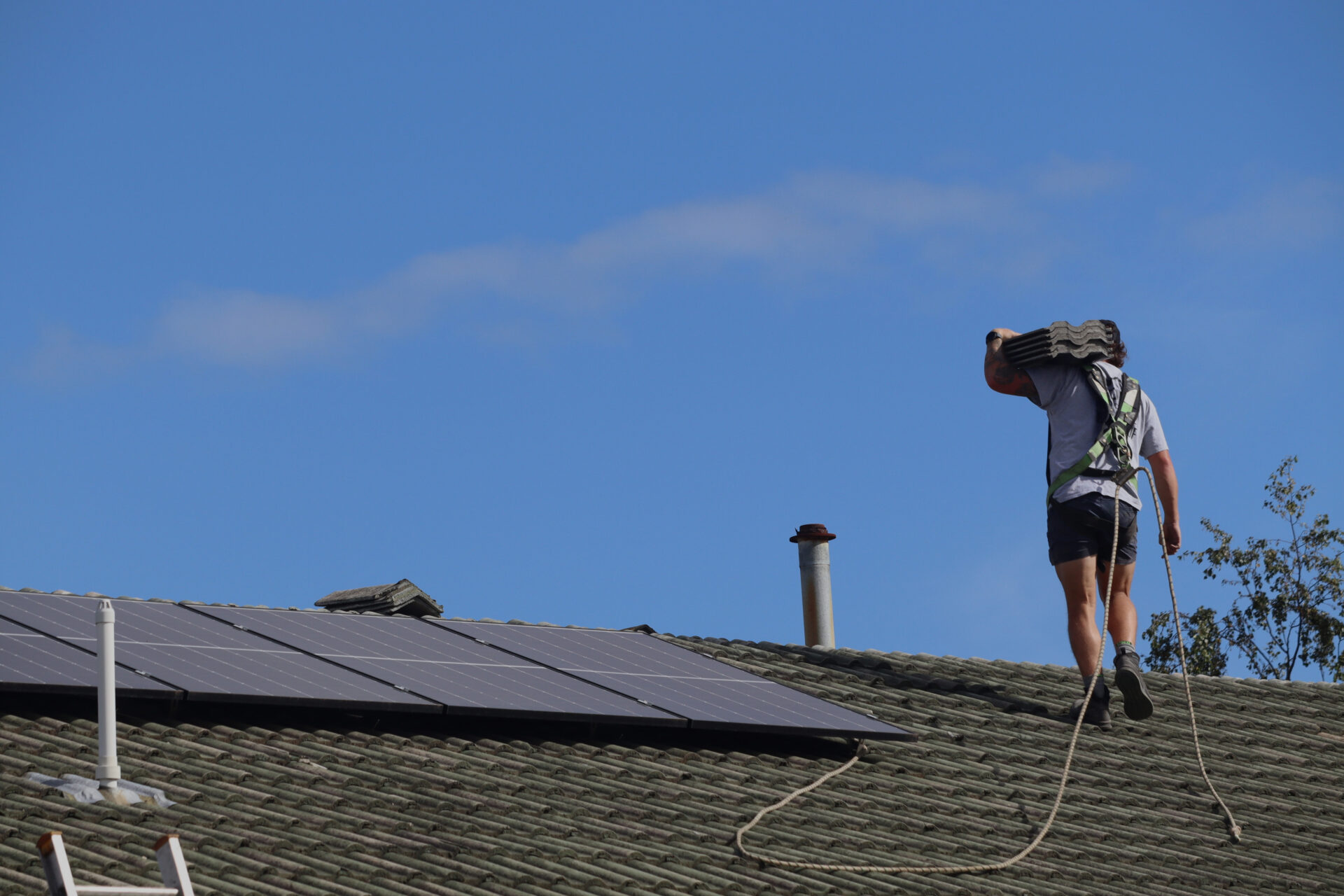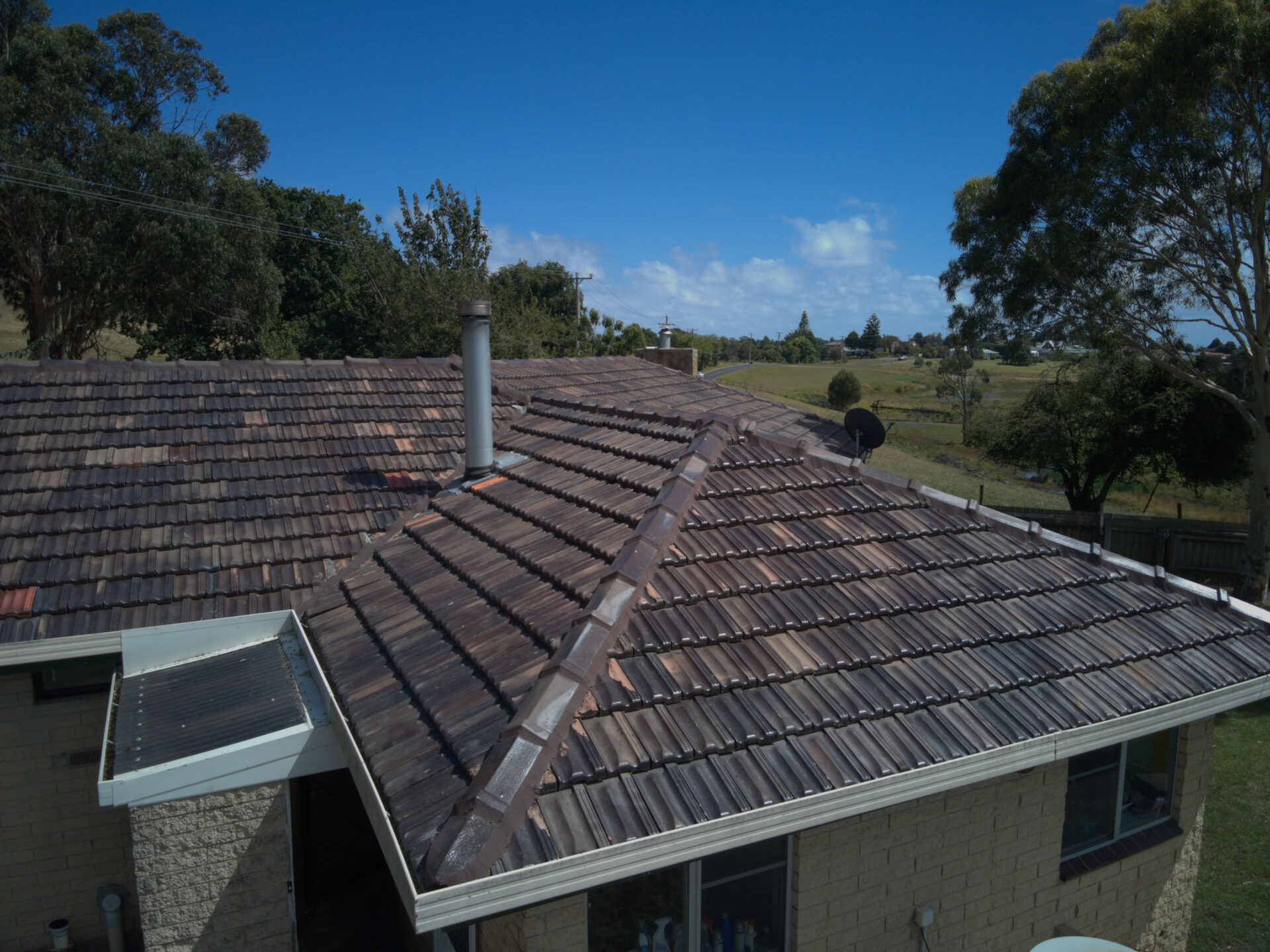Your roof is your home’s protector. It shields you from the elements and ensures your valuable contents remain safe and secure. However, over time, various factors like weather, age, and poor maintenance can lead to issues that require professional roof repairs. Addressing damage early is the best way to prevent a simple repair from turning into a costly restoration or re-roofing.
Below, we break down the most common roof repairs homeowners face and why they shouldn’t be ignored.
The Top 4 Most Common Roof Repairs
Roof repairs can range from minor fixes to major structural concerns. As a homeowner, understanding the most common issues and their warning signs early on will make repairs much easier to address and allow you to take action before they escalate into costly problems.
Here are the four most frequent roof repairs that homeowners encounter:
Cracked and Missing Roof Tiles
The most common problem for any tiled roof is cracked or missing roof tiles. They expose your home to the elements, creating vulnerabilities in your roof’s structure. Even a single damaged tile can allow water to seep through, leading to internal damage.
Due to harsh weather conditions like strong winds, heavy rain, or hail, tiles can crack or disappear. Over time, general wear and tear can weaken tiles, making them more susceptible to damage. On the job, our team at RDW Roofing have also noticed solar panel installations as an issue that leads to damaged tiles. This is caused by foot traffic and the need to drill into the tiles to install the panels. In addition, poor roof installation or opting for low-quality materials can also accelerate deterioration.
Unattended, cracked or missing tiles can cause severe water damage, leading to leaks and eventual mould growth in your insulation and ceiling. Most dangerous of all, if a leaking roof is exposed to electricals, it becomes a serious fire risk. Over time, the roof’s structural integrity may even weaken, increasing the cost of repairs and potentially requiring a complete replacement.
Peeling, Missing, or Rusted Flashing
Flashing is a protective metal strip installed around chimneys, vents, and skylights to prevent water from entering your home. It’s also found within your roof’s valleys (called valley flashing) and allows water and debris to flow freely into your gutters in the event of a storm. If flashing peels, rusts, or goes missing, these vulnerable areas become exposed to moisture, eventually causing roof leaks.
Flashing deterioration is often caused by prolonged exposure to extreme weather, corrosion, or improper installation. Strong winds and heavy storms can also loosen flashing over time.
Deteriorated Pointing and Bedding Under Ridge Caps
Ridge caps sit at the highest point of a tiled roof. They’re secured by a cement-based mixture called bedding and sealed with a flexible sealant called pointing mortar. Over time, this material can degrade, causing ridge caps to become loose and even dislodged entirely.
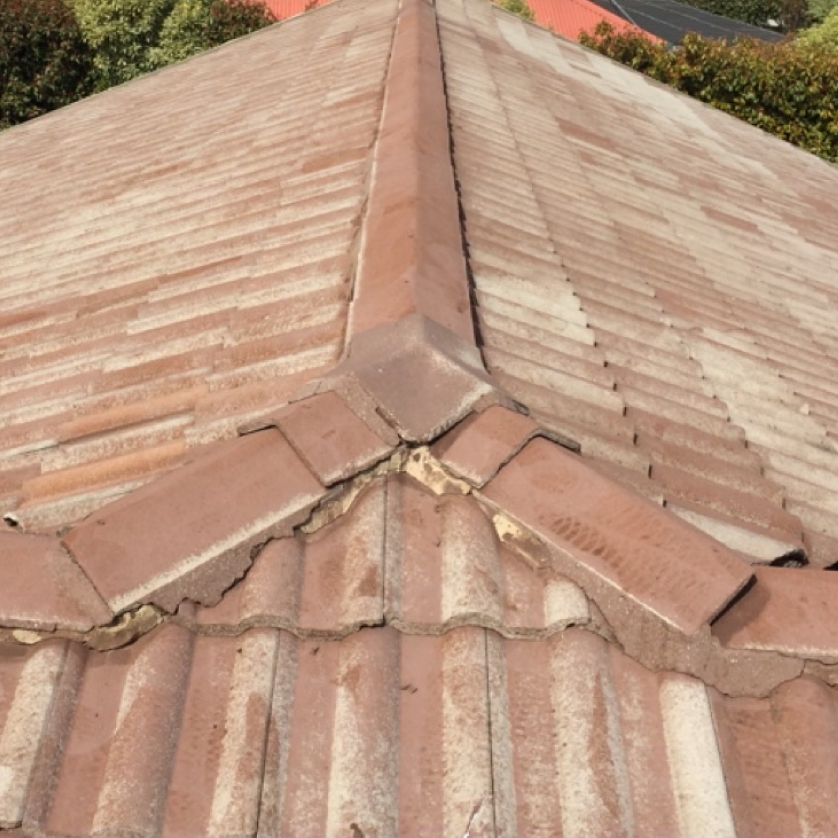
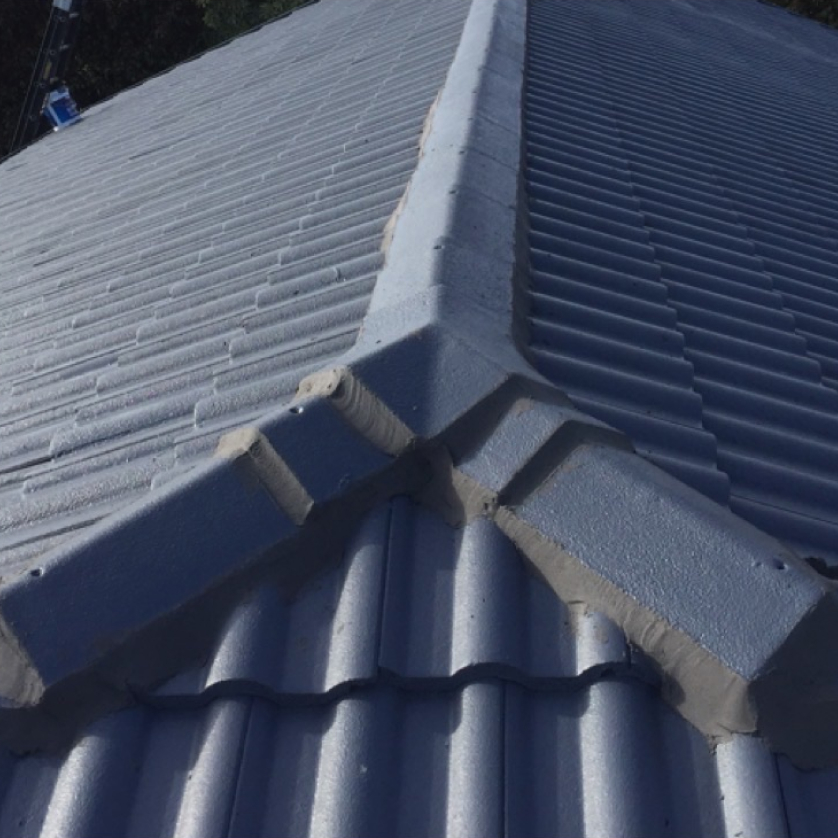
Exposure to harsh weather conditions, temperature fluctuations, and general ageing can cause the bedding and pointing to crack and deteriorate. Poor maintenance and low-quality workmanship can also accelerate the issue. Loose ridge caps are another leading cause of leaks and water infiltration.
Damaged Roof Ventilation Systems
Roof ventilation systems help regulate airflow and prevent moisture buildup in the attic. They can be pivotal in helping maintain attic air quality and, ultimately, your home by reducing the chance of mould or mildew growth. If these systems become blocked, damaged, or fail entirely, they can lead to internal roofing issues.
Blocked or broken vents can result from debris buildup, animal interference, or weather-related damage. Poorly installed ventilation systems may also fail prematurely. Without proper ventilation, excess moisture can accumulate, leading to mould growth, increased humidity, and deterioration of roof materials.
Can You Repair a Roof Without Replacing It?
Yes, in most instances, roof repairs can restore your roof without the need for a full replacement. Regular maintenance (such as replacing damaged tiles, repointing ridge caps, and fixing flashing) can significantly extend your roof’s lifespan. However, if your roof has suffered extensive damage or your roofing elements have reached the end of their service life, a full replacement may be the only viable option.
Is It Worth It to Repair a Roof?
Absolutely. A neglected roof can cause widespread damage that far outweighs the cost of repairs. Investing in timely roof repairs leads to long-term savings by preventing severe structural issues, including:
- Electrical hazards from water leaks can reach wiring and increase the risk of short circuits or fire.
- Waterlogged ceilings can lead to sagging, staining, and potential ceiling collapse.
- Mouldy insulation can lead to health concerns and decreased energy efficiency.
- Wall damage is caused by dripping water into wall structures, leading to unsightly staining, insulation damage, and electrical risks.
Can I Repair a Roof Myself?
We don’t recommend it. Attempting to repair a roof yourself comes with serious risks:
- Voiding your insurance: Many insurance policies require roofing work to be carried out by a licensed professional.
- Height-related dangers: Australian roofers must wear harnesses for safety—working at heights without proper training can be extremely dangerous.
- Lack of experience: Roofers undergo years of training to diagnose and fix roofing issues properly. A poorly executed DIY fix can lead to bigger problems down the line.
Need Roof Repairs? Trust RDW Roofing in Hobart & Launceston
RDW Roofing provides roof repair in Hobart and Launceston, which are delivered by licensed professionals. Our expert roofers ensure high-quality workmanship that meets Australian standards, providing long-lasting solutions to protect your home.
If you suspect roof damage, don’t wait until it becomes a costly problem. Contact RDW Roofing today for a professional inspection and repair.
